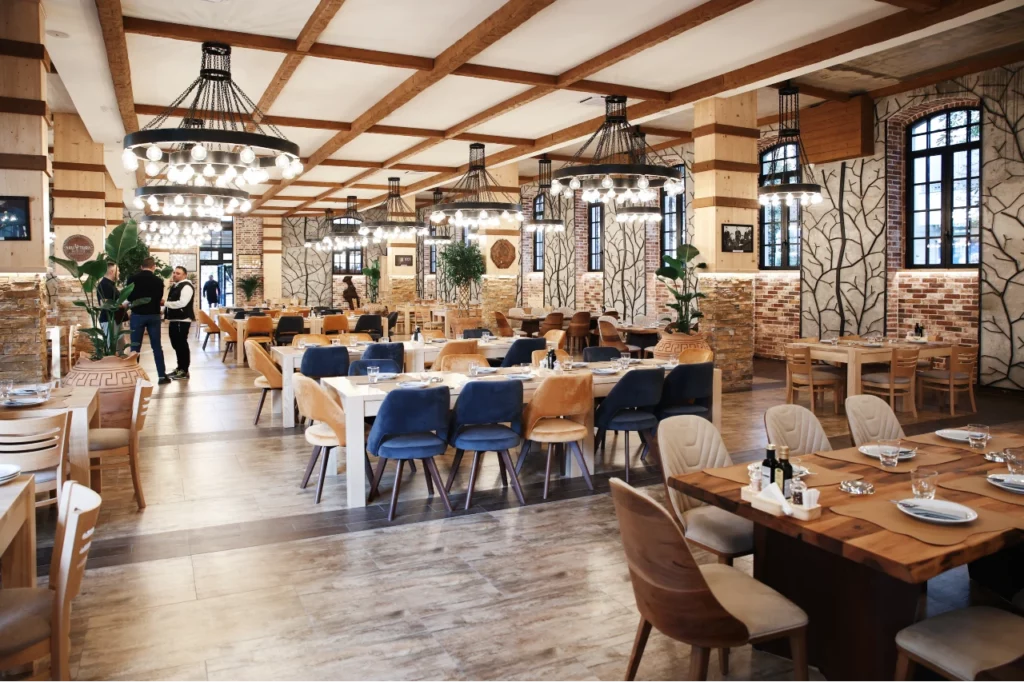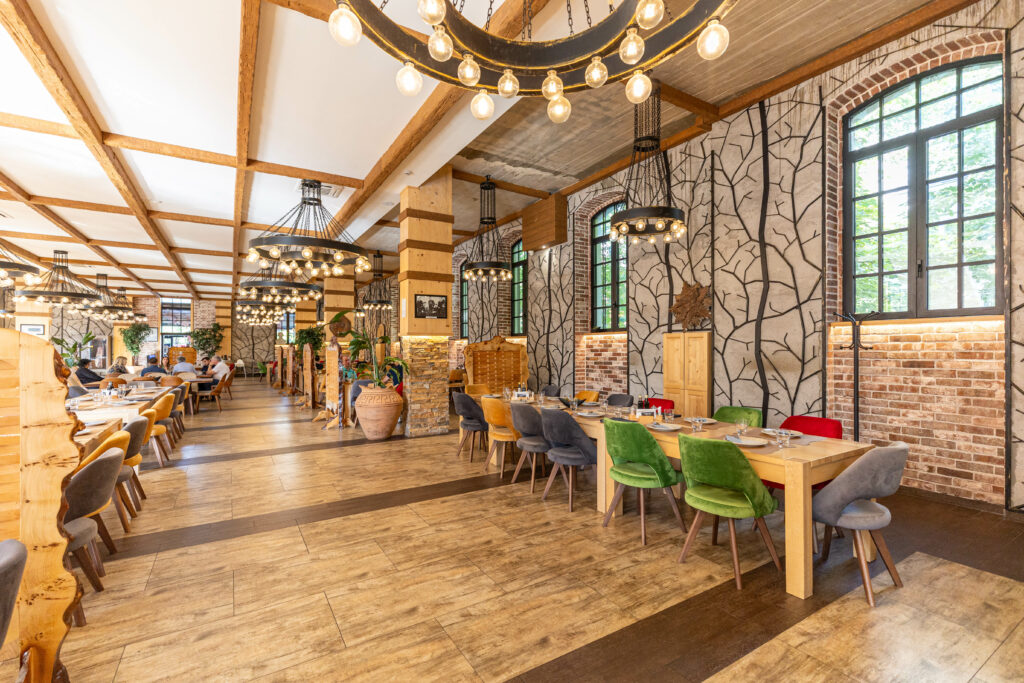
A blend of old and new. A meeting of the past and future. The clash of a hurried pace and a leisurely stroll. That's Dorćol.
Kombinacija različitosti i suprotnosti koja se savršeno uklapa u temperament naroda sa ovog dela Balkana. U duhu ovog najstarijeg dela prestonice nastao je i restoran livnica koji je neka davna vremena vratio u Carigradsku ulicu.
However, in this part of Belgrade, you no longer smell the scent that arises during the casting of monuments and sculptures, but the smell of homemade dishes prepared according to traditional recipes.
Od gibanica, proja, suhomesnatih proizvoda, kuvanih jela, pa do jagnjetine, teletine, i ćuretine ispod sača i pečenja, restoran livnica nudi širok asortiman jela koja svojom sočnom teksturom osvajaju nepca.
Dry-aged meats have become an indispensable choice for true hedonists in recent years, so they have found their place on our rich table. And that's not the end of this gourmet story. In the garden, a spit is turning in front of the guests, so that all senses are satisfied.

The rhapsody of flavors is complemented by wines from domestic and foreign producers, which we carefully care for in a large wine cellar, allowing each bottle to show its best taste. For enthusiasts of other spirits, the choice will also not be easy. The drink selection is diverse, and the quality is guaranteed because we ensure that they wash away all the daily worries with their taste. As the icing on the cake, there are delicacies that will satisfy even the most demanding gourmets.
Kada zakoračite u carstvo livnice, dočekuju vas visoki plafon, skulpture, koje su se nekad ovde izlivale, raskošni lusteri, stara cigla, kovano gvožđe – zapravo jedan zanimljiv spoj savremene arhitekture i duha prošlosti. Iako sala može istovremeno da primi 400 gostiju, nemate razloga za brigu, jer naš uigran tim stiže da se posveti svakome pružajući mu uslugu kakva je uvek postojala u starim, boemskim beogradskim restoranima. Osim zatvorenog dela, tu je i bašta u kojoj suncem okupani dani i dreveće maslina postaju još lepši kada se uz dobar ručak i izvrsno vino nazdravi životu i svim njegovim bojama.
Mi čuvamo najbolje iz Srbije, biramo hranu koja stiže sa naših pašnjaka i negujemo onu pravu domaćinsku atmosferu. Pridružite nam se na gastronomskom putovanju koje počinje prvim zalogajem u restoranu Livnica.

In its long, rich, and tumultuous history, Belgrade has been razed to the ground and rebuilt. It has changed the names of streets, the purposes of buildings, nurtured children who have become important people, and always told a new story. This one begins in the oldest city district, the very heart of the capital, on the foundations of a building under whose roof art took its final form.
From a soap factory, automobile workshop, and foundry of parts, to the artistic foundry 'Plastika', to the place where some of the most valuable monuments and sculptures in old Yugoslavia were created. All of this fit under the roof of the building at 23 Carigradska Street in Dorćol, whose exterior remains the same as when the last brick was laid.
Although the building itself was erected before the First World War, the adaptation of the facility was done in 1953 according to the project of the famous architect Milan Antonović. Due to the presence of foundry furnaces and technological capabilities, it continued its role as a foundry, but under the auspices of artists. It was here that the sculptor Sreten Stojanović cast the famous monument to Karađorđe, located in front of the Saint Sava Temple on Vračar. In addition to the members of the sculpture section of the Association of Fine Artists of Serbia, some of the most important names in Yugoslav sculpture created here: Lojze Dolinar, Franjo Kršinić, Olga Janičić, Vida Jocić, and others. Although there were foundries throughout Serbia, this one in Dorćol was unique in that it was the only one where the wax casting technology was applied. Today, this building is under the protection of the City of Belgrade, and all objects from the artistic foundry, such as cranes and foundry pots, are designated as movable cultural assets.
Iako je ovo zdanje na uglu Kneza Miletine i Carigradske ulice najpoznatije kao livnica, pre Prvog svetskog rata su se tu nalazile obične, porodične kuće. Malo ko zna da je beogradska adresa Gavrila Principa bila baš Carigradska broj 23. Gavrilo Princip je poslednju godinu gimnazije završio u Beogradu, pa su njegovi česti boravci u srpskoj prestonici završavali i počinjali baš tu, gde se danas nalaze hotel Livnica i restoran Livnica.
With the story of history, we begin a new chapter of this building, which after years of darkness deserves to shine again. Perhaps sculptures and monuments will no longer be cast here, but together we will sculpt new moments and nail down everything from the past that the Belgrade cobblestones whisper about.
With the story of history, we begin a new chapter of this building, which after years of darkness deserves to shine again. Perhaps sculptures and monuments will no longer be cast here, but together we will sculpt new moments and be guardians of everything from the past that the Belgrade cobblestones whisper about.